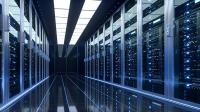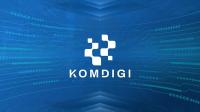Three Data Centre prediction trends for Indonesia
05:53:56 | 23 May 2018

Dennis Kom.(ist)
JAKARTA (IndoTelko) – Indonesia moved towards a comprehensive data law with Government Regulation 82 (GR82), requiring all public data to be contained in locally-based data centres by 2017, placing great pressure on data centre operators to stay ahead of rapid changes in technology.
Data centre operators are constantly challenged to keep up with increasing bandwidth demands.
Exacerbated by the explosion of the Internet of Things (IoT) and growing number of connected devices, the ability of data centre operators to collect, process, transmit and share data, is critical in successfully servicing both enterprise and government sector clients.
What are the sweeping technological changes for data centres, and how can enterprises and operators in Indonesia cope?
According to Corning Optical Communications, here are the top three transformative trends to look out for in 2018 and beyond.
Demand for 5G speeds
With 5G expected to roll out over the next two to three years, the hyper-connectivity involved will drastically change data centre operations, requiring data centres to meet increased demand while maintaining high levels of reliability. “The way I see data centres being impacted is how they are expected to efficiently deliver services as evolving technology and cloud services continue to add a greater load on network infrastructure,” says Dennis Kom, Director for Enterprise Networks, Global & Strategic Accounts for Asia Pacific at Corning Optical Communications. “There has been a surge in mobile data usage in the Asia-Pacific region. In 2016, the region hit 3,109,117 terabytes in mobile data consumption per month, and this will increase to 22,845,908 terabytes per month by 2021.” “The problem is compounded by IoT technology such as AR/VR headsets and self-driving cars which rely on the data centre to effectively receive data and transmit it back to deliver a service, all in real-time. The challenge is to provision, add, and support high-density, bandwidth-greedy applications. Customers expect data centres to meet increased demand while maintaining high levels of reliability.” 5G standards will require the data centre to be optimised to ensure data streaming from devices will reach the facility in the quickest way possible. Mission-critical applications stipulate that the latency of response from the data centre needs to be 10 times better than what exists today. Selecting the most flexible cabling solution for 40G, 100G and 400G transmission networks is key to achieving just that. Edge computing and the data centre
Edge computing is the next technological innovation that will revolutionise data centre operations. Edge computing, by its very nature, takes place on the “edge” of a network, rather than in its central cloud. Its decentralised nature means that data analysis occurs close to the source of the data, rather than in the centralised cloud. This reduces network latency during the transfer of data to the device. “Edge computing alleviates the load, or relieves the pressure, on the data centre. With 5G, telco operators will roll out additional computing power to the edge of their networks. This will be essential to effectively process vast amounts of data driven by IoT devices,” says Kom. “An example of this is self-driving cars. Self-driving cars need to be able to process the data its sensors output immediately, in order to avoid any potentially dangerous situations, such as a collision. Any delay in receiving the processed data, because the data is headed to a centralised cloud rather than the edge, could be dangerous. With edge computing, there is a reduction of network latency during the transfer of data, enabling faster delivery of data to the end user.” It’s important for data centre operators to realise that edge computing and the traditional use of a data centre are not mutually exclusive. The two separate operations help grow one another, and with forecasts that the uptake of cloud computing is set to increase in 2018, it is important for data centres to put edge computing in place. Speed
Underpinning all this is the need for greater speed. Reducing latency is absolutely key when it comes to growing both edge computing and the centralised cloud. Deploying an optical fibre solution enables the speed and reach required for edge computing.
With the ability to transmit information at the speed of light, the optical fibre backbone can drive the edge computing site to be located as close to the data use point as possible, while allowing the intelligence processed at the edge to be instantly shared with applications across the rest of the network, for a richer, seamless user experience.
Operators must be ready to tackle the rise of IoT and 5G along with the projected growth in the region’s data centre services market.
Deploying an optical fibre solution to help grow edge computing capabilities in conjunction with cloud computing will help ensure data centre operators stay ahead of customer demands.(es)
Baca juga :
•
•
•
With 5G expected to roll out over the next two to three years, the hyper-connectivity involved will drastically change data centre operations, requiring data centres to meet increased demand while maintaining high levels of reliability. “The way I see data centres being impacted is how they are expected to efficiently deliver services as evolving technology and cloud services continue to add a greater load on network infrastructure,” says Dennis Kom, Director for Enterprise Networks, Global & Strategic Accounts for Asia Pacific at Corning Optical Communications. “There has been a surge in mobile data usage in the Asia-Pacific region. In 2016, the region hit 3,109,117 terabytes in mobile data consumption per month, and this will increase to 22,845,908 terabytes per month by 2021.” “The problem is compounded by IoT technology such as AR/VR headsets and self-driving cars which rely on the data centre to effectively receive data and transmit it back to deliver a service, all in real-time. The challenge is to provision, add, and support high-density, bandwidth-greedy applications. Customers expect data centres to meet increased demand while maintaining high levels of reliability.” 5G standards will require the data centre to be optimised to ensure data streaming from devices will reach the facility in the quickest way possible. Mission-critical applications stipulate that the latency of response from the data centre needs to be 10 times better than what exists today. Selecting the most flexible cabling solution for 40G, 100G and 400G transmission networks is key to achieving just that. Edge computing and the data centre
Edge computing is the next technological innovation that will revolutionise data centre operations. Edge computing, by its very nature, takes place on the “edge” of a network, rather than in its central cloud. Its decentralised nature means that data analysis occurs close to the source of the data, rather than in the centralised cloud. This reduces network latency during the transfer of data to the device. “Edge computing alleviates the load, or relieves the pressure, on the data centre. With 5G, telco operators will roll out additional computing power to the edge of their networks. This will be essential to effectively process vast amounts of data driven by IoT devices,” says Kom. “An example of this is self-driving cars. Self-driving cars need to be able to process the data its sensors output immediately, in order to avoid any potentially dangerous situations, such as a collision. Any delay in receiving the processed data, because the data is headed to a centralised cloud rather than the edge, could be dangerous. With edge computing, there is a reduction of network latency during the transfer of data, enabling faster delivery of data to the end user.” It’s important for data centre operators to realise that edge computing and the traditional use of a data centre are not mutually exclusive. The two separate operations help grow one another, and with forecasts that the uptake of cloud computing is set to increase in 2018, it is important for data centres to put edge computing in place. Speed
Underpinning all this is the need for greater speed. Reducing latency is absolutely key when it comes to growing both edge computing and the centralised cloud. Deploying an optical fibre solution enables the speed and reach required for edge computing.
Artikel Terkait
-
 English Ver. - 04:06:00 | 25 Aug 2025The collaboration is designed to simplify complex payment processes for global travel businesses
English Ver. - 04:06:00 | 25 Aug 2025The collaboration is designed to simplify complex payment processes for global travel businesses -
 English Ver. - 04:07:00 | 11 Aug 2025Wireless Logic has completed the acquisition of Zipit Wireless
English Ver. - 04:07:00 | 11 Aug 2025Wireless Logic has completed the acquisition of Zipit Wireless -
 English Ver. - 05:00:00 | 27 Jul 2025JLL’s involvement included identifying and securing a site that met DAMAC’s technical and strategic requirements
English Ver. - 05:00:00 | 27 Jul 2025JLL’s involvement included identifying and securing a site that met DAMAC’s technical and strategic requirements
Rekomendasi
Berita Pilihan
More Stories
PR Newswire








.jpeg)
















































